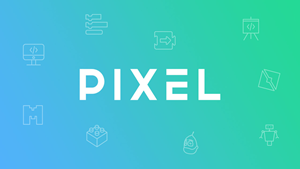Unlocking the Digital Playground: Free Programming Lessons for Kids
November 8, 2024, 10:04 pm
Location: United States, California, San Mateo
Employees: 1001-5000
Founded date: 2004
Total raised: $456.3M
In today's digital age, programming is the new literacy. It's not just for adults anymore. Children and teenagers are diving into the world of coding, game development, and digital creativity. With over 100 free online programming lessons available, kids can embark on their coding journey without spending a dime. This article explores the various resources available, the importance of early programming education, and how platforms like Scratch, Roblox, and Python are shaping the future of young learners.
The digital landscape is vast. It’s a playground filled with opportunities. Kids can learn to code, create games, and even design websites. The best part? They can do it all for free. The recent surge in online programming lessons caters to children of all ages. From preschoolers to teenagers, there’s something for everyone.
Scratch and Scratch Jr. are excellent starting points. Scratch Jr. is designed for the youngest coders. It uses visual blocks to teach basic programming concepts. Kids don’t need to read to start coding. They can create simple animations and stories. It’s like building with digital Lego blocks. Each block represents a command, and together they form a complete project. This method fosters creativity and logical thinking.
Once kids master Scratch Jr., they can transition to Scratch. This platform introduces text-based commands within the block structure. It’s a natural progression. Children can now modify commands and create more complex projects. They can build games, animations, and interactive stories. Scratch serves as a bridge to more advanced programming languages.
Kodu Game Lab is another fantastic tool. It’s designed for younger audiences, focusing on game development. Kids can create their own games using a simple visual programming language. The learning process is gamified, making it engaging and fun. They learn about algorithms and coding principles while creating their own virtual worlds. It’s like being a game designer in a digital sandbox.
Roblox Studio takes it a step further. This platform allows kids to create and share their own games. It’s a social experience. Children can collaborate, share ideas, and learn from each other. The scripting language, Lua, is introduced here. While it may seem daunting, kids can grasp it through hands-on projects. They can create anything from obstacle courses to intricate simulations. The possibilities are endless.
Python is another powerful language that kids can learn. It’s versatile and widely used in the industry. Teaching Python through Minecraft is a brilliant approach. Many children are already familiar with the game. They can learn to code while exploring their favorite virtual world. This method lowers the barrier to entry. Kids can see the immediate impact of their code, making learning more engaging.
For older children, there are more advanced programming lessons. These include web development using HTML, CSS, and JavaScript. Kids can learn to build their own websites. They can create interactive applications and understand how the web works. This knowledge is invaluable in today’s digital economy.
Digital creativity is also essential. Tools like Figma allow kids to explore graphic design. They can create logos, illustrations, and user interfaces. This skill set complements programming knowledge. It opens doors to careers in web design and digital marketing.
The importance of early programming education cannot be overstated. It fosters problem-solving skills, logical thinking, and creativity. Kids learn to approach challenges methodically. They develop resilience as they debug their code and refine their projects. These skills are transferable to any field they choose to pursue.
Moreover, the ability to code empowers children. They become creators rather than just consumers of technology. They can build their own games, apps, and websites. This sense of agency is crucial in a world increasingly driven by technology.
Parents and educators play a vital role in this journey. They can guide children to the right resources and encourage them to explore. The wealth of free online lessons makes it easier than ever to get started. It’s an opportunity for children to learn at their own pace, in their own space.
As we look to the future, the demand for programming skills will only grow. Industries are evolving, and technology is at the forefront. By equipping children with these skills, we prepare them for success in a digital world. They will be ready to tackle challenges and seize opportunities.
In conclusion, the digital playground is open for exploration. With over 100 free programming lessons available, children can embark on an exciting journey into the world of coding. From Scratch to Python, the resources are abundant. It’s time to unlock the potential of the next generation. Let them code, create, and innovate. The future is bright, and it starts with education.
The digital landscape is vast. It’s a playground filled with opportunities. Kids can learn to code, create games, and even design websites. The best part? They can do it all for free. The recent surge in online programming lessons caters to children of all ages. From preschoolers to teenagers, there’s something for everyone.
Scratch and Scratch Jr. are excellent starting points. Scratch Jr. is designed for the youngest coders. It uses visual blocks to teach basic programming concepts. Kids don’t need to read to start coding. They can create simple animations and stories. It’s like building with digital Lego blocks. Each block represents a command, and together they form a complete project. This method fosters creativity and logical thinking.
Once kids master Scratch Jr., they can transition to Scratch. This platform introduces text-based commands within the block structure. It’s a natural progression. Children can now modify commands and create more complex projects. They can build games, animations, and interactive stories. Scratch serves as a bridge to more advanced programming languages.
Kodu Game Lab is another fantastic tool. It’s designed for younger audiences, focusing on game development. Kids can create their own games using a simple visual programming language. The learning process is gamified, making it engaging and fun. They learn about algorithms and coding principles while creating their own virtual worlds. It’s like being a game designer in a digital sandbox.
Roblox Studio takes it a step further. This platform allows kids to create and share their own games. It’s a social experience. Children can collaborate, share ideas, and learn from each other. The scripting language, Lua, is introduced here. While it may seem daunting, kids can grasp it through hands-on projects. They can create anything from obstacle courses to intricate simulations. The possibilities are endless.
Python is another powerful language that kids can learn. It’s versatile and widely used in the industry. Teaching Python through Minecraft is a brilliant approach. Many children are already familiar with the game. They can learn to code while exploring their favorite virtual world. This method lowers the barrier to entry. Kids can see the immediate impact of their code, making learning more engaging.
For older children, there are more advanced programming lessons. These include web development using HTML, CSS, and JavaScript. Kids can learn to build their own websites. They can create interactive applications and understand how the web works. This knowledge is invaluable in today’s digital economy.
Digital creativity is also essential. Tools like Figma allow kids to explore graphic design. They can create logos, illustrations, and user interfaces. This skill set complements programming knowledge. It opens doors to careers in web design and digital marketing.
The importance of early programming education cannot be overstated. It fosters problem-solving skills, logical thinking, and creativity. Kids learn to approach challenges methodically. They develop resilience as they debug their code and refine their projects. These skills are transferable to any field they choose to pursue.
Moreover, the ability to code empowers children. They become creators rather than just consumers of technology. They can build their own games, apps, and websites. This sense of agency is crucial in a world increasingly driven by technology.
Parents and educators play a vital role in this journey. They can guide children to the right resources and encourage them to explore. The wealth of free online lessons makes it easier than ever to get started. It’s an opportunity for children to learn at their own pace, in their own space.
As we look to the future, the demand for programming skills will only grow. Industries are evolving, and technology is at the forefront. By equipping children with these skills, we prepare them for success in a digital world. They will be ready to tackle challenges and seize opportunities.
In conclusion, the digital playground is open for exploration. With over 100 free programming lessons available, children can embark on an exciting journey into the world of coding. From Scratch to Python, the resources are abundant. It’s time to unlock the potential of the next generation. Let them code, create, and innovate. The future is bright, and it starts with education.

